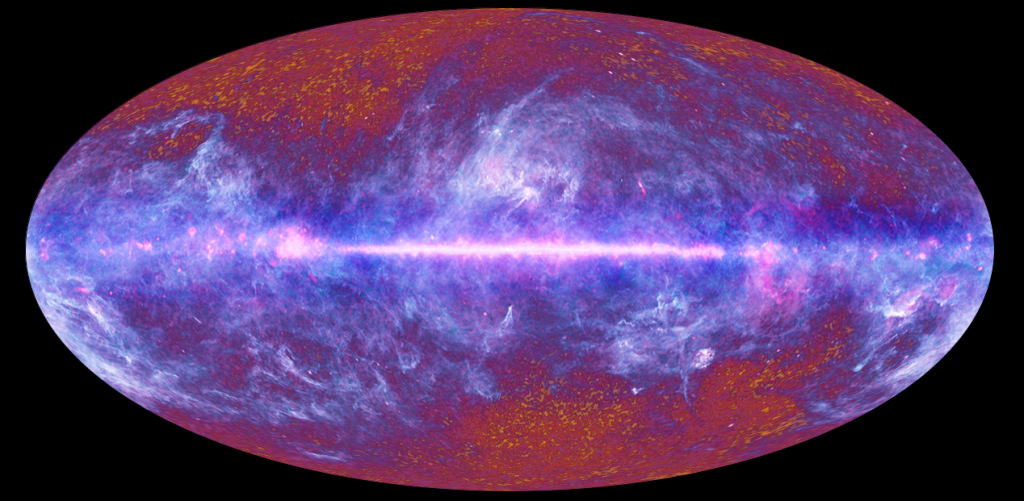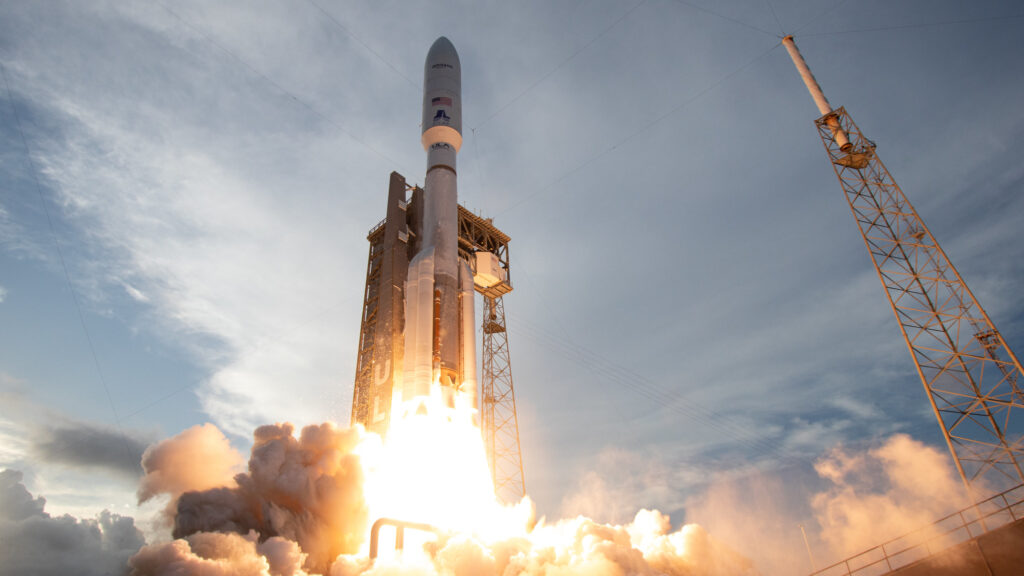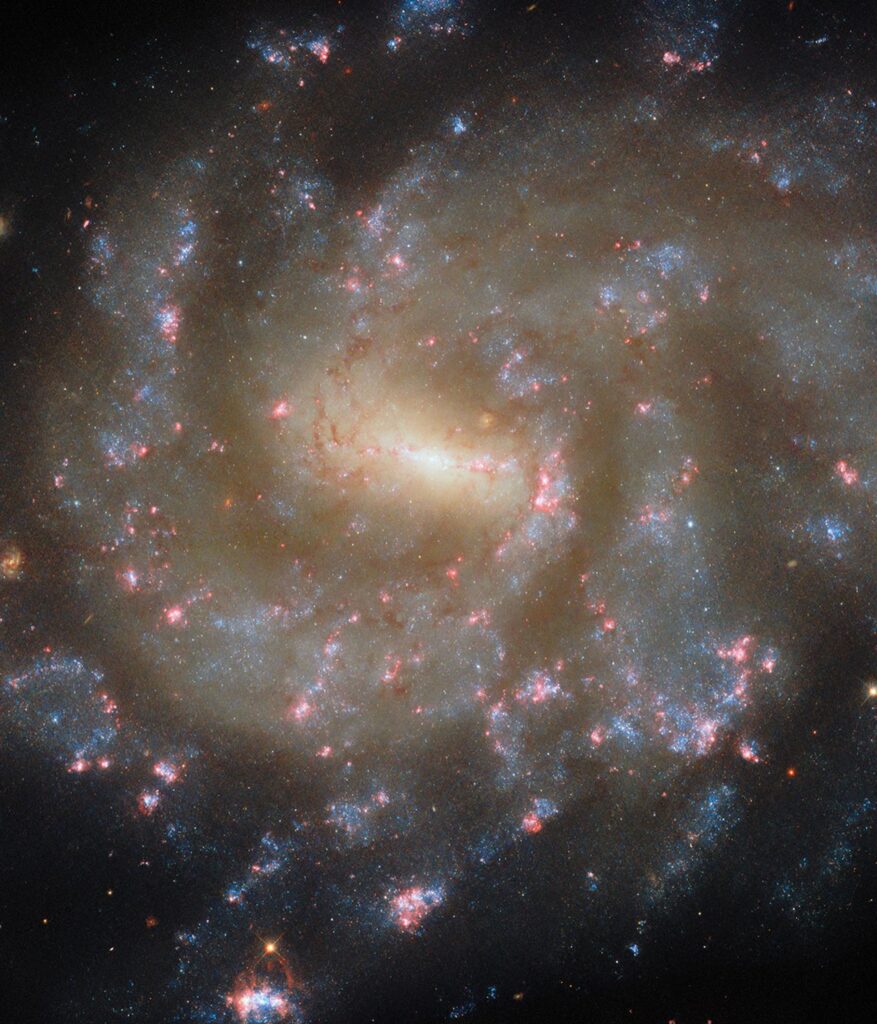In about 5 billion years, our Sun will run out of fuel and expand, possibly engulfing Earth. These end stages of a star’s life can be utterly beautiful – as is the case with this planetary nebula called the Helix Nebula. Astronomers study these objects by looking at all kinds of light. This images show X-rays from NASA’s Chandra X-ray Observatory (magenta), optical light data from NASA’s Hubble Space Telescope (orange, light blue), infrared data from the European Southern Observatory VISTA telescope (gold, dark blue), and ultraviolet data from GALEX (purple) of the Helix Nebula.
Related posts
-

Vast cosmic voids are far from empty — they’re hiding something dark
At the very largest scales, galaxies are not scattered around randomly. Instead, they form a pattern... -

Atlas V rocket to launch Amazon’s 2nd batch of Kuiper internet satellites on June 13
Amazon’s second fleet of internet satellites now has a target launch date. The stack of 27... -

Hubble Captures Starry Spectacle
Explore Hubble Hubble Home Overview About Hubble The History of Hubble Hubble Timeline Why Have a...